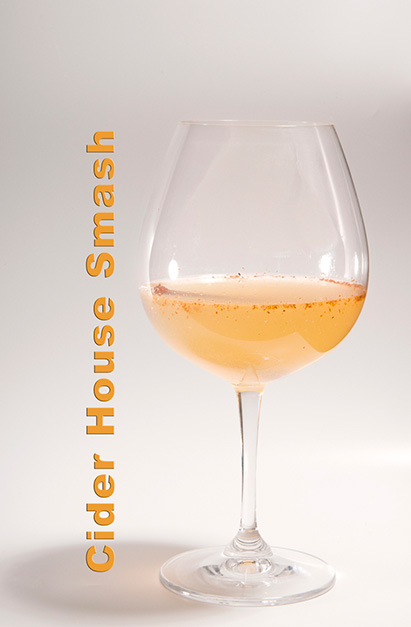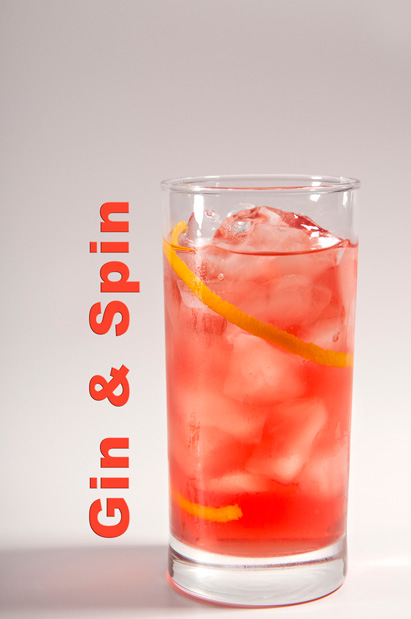Sweet Tea Mojito
- 2 oz. Sweet Tea Vodka
- 2.5 oz. Club Soda
- Fresh Mint leaves
- Lime Juice (preferably from genuine fresh limes)
Grab those beautifully fresh mint leave and muddle them up in a tumbler glass with a few squeezes of fresh lime juice. For best effect, go with genuine limes rather than the squirt. Fill the tumbler glass with 2 oz of Sweet Tea Vodka, 2.5 oz of club soda. Pour into a glass and you have a truly beautiful drinkable art at your disposal.
Orange Sweetness
- 3 oz. Sweet Tea Vodka
- 3 oz. OJ (pulp content is your call)
This one is easy! Mix the Sweet Tea Vodka and orange juice in a chilled glass. Throw in some rocks (ice cubes) to suck on and you’ve got a delicious and easy sippin’ drink for the front porch.
Party Animal
- .75 oz. Sweet Tea Vodka
- .75 oz. Grand Marnier
- Alcohol infused Whipped Cream
Mix an even amount of Sweet Tea Vodka and Grand Marnier (or Gran Gala) to a shot glass. If the shot glass is cold it’ll be even better. Top it off with alcohol-infused whipped cream. Say your piece and let her rip. This one is sure to start any party. Cha-ching.
Paradise Sweet-y
- 3 oz. coconut rum
- 3 oz. of your favorite Sweet Tea Vodka
- Freshest lemon you can find!
Take a chill pill and relax with this brand-new Sweet Tea Vodka recipe. No matter where you are one sip of this puppy makes you feel like your on an island with Jimmy Buffett himself. Who needs a cheeseburger when you’ve got Sweet Tea Vodka?
Take the alcohol, mix them up in a highball glass with a whole bunch of ice. Squeeze that lemon on top and take a sip. Let us know whatcha think!
Sweet Tea Cider
- 2. oz. Cinnamon Whiskey
- 2 oz. Sweet Tea Vodka
- 1 oz. your friendly neighborhood apple liqueur
- Splash of soda
Find yourself a chilled highball glass and fill it with ice. Keep it cold. Keep it fresh. Add cinnamon-flavored or infused whiskey and your favorite sweet tea vodka into the highball glass. Add an ounce of apple liquor and just enough soda to carbonate. Voila! You are ready to enjoy it.
Sweet Cranberry
- 3 oz. Sweet Tea Vodka
- 3 oz. Cranberry Juice
- Whole load of ice
Get yourself a chilled highball glass. Fill her up all the way with ice. Take your two ingredients and mix evenly. Enjoy your hard work and take a load off! You deserve it.
Bright Eyes Ale
- 2.5 oz. Sweet Tea Vodka (any kind – choose wisely!)
- 2.5 oz. Ginger Ale
- 1 slice of lemon
Evenly distribute your favorite Sweet Tea Vodka (we recommend 2.5 oz) with Ginger Ale. Mix in a highball glass filled with ice. Twist a fresh slice of lemon to flavor! Let us know what you think in the comments below!
The Taste of Sunshine
- One whole bottle of Sweet Tea Vodka
- One can of frozen lemonade concentrate
- 2.5 bottles of delicious beer
Grab that bottle of your favorite sweet tea lemonade. Yup, that’s right… the whole bottle! Mix it up with your frozen lemonade and leave it in your freezer for one night. When you’re ready to party, add the beer to the batch and pour over ice.
Sweetest Summer
- 3 oz. Sweet Tea Vodka
- 3 oz. lemon-lime soda
Kick back, relax, and enjoy a sweet taste of summer. This recipe is intended to take you back to that summer beach chair. Mix 3 oz of Sweet Tea Vodka with 3 oz of lemon-lime soda in a highball glass filled with ice. That’s it! You’re ready to go!
Firefly Peach Tea Ale
- 3 oz. Peach flavored Sweet Tea Vodka
- 1.5 oz. Green Tea
- 1.5 oz. Ginger Ale
Howdy folks! This mix is fun and easy to do. Get yourself some Peach-flavored Sweet Tea Vodka. They are available from Seagram or Firefly. Delicious BTW! Mix the Sweet Tea Vodka with an even amount of Ginger Ale and Green Tea. Pour in a highball glass and y’all are ready to go!
Sex On The Front Porch
- 1.5 oz. Sweet Tea Vodka
- Cranberry Juice
- Orange Juice
Howdy folks. Get yourself an equal mixture of orange juice and cranberry juice. Pour this into a highball glass filled to the very brim with ice. Add 1.5 oz of your absolute favorite sweet tea vodka and mix!
Sweet Lady
- 1.5 oz. Sweet Tea Vodka
- 1.5 oz. Watermelon flavored Mixture
Howdy folks. Take your Sweet Tea Vodka (the best kind y’all can find). Mix the Sweet Tea Vodka up with some watermelon-flavored juice or mixture. Shake in an ice-filled tumbler. Strain into an Old-Fashioned Glass. You might want to throw on that Tyrese song while you’re at it because if you’re drinking this recipe you never know what could happen!
The 19th Hole
1.5 oz. Gran Gala / Grand Marnier
- 3 oz. Pink Lemonade
- 1.5 oz. of your favorite Sweet Tea Vodka
- A fresh slice of lemon
Take the alcohol (Sweet Tea Vodka and Grand Marnier) and mix ‘em up in a tantalizing highball glass. Make sure the glass is filled with ice because you’ll want this one cold. Put that lemon slice on the rim of the glass because you’re classy. We named this one 19th hole because of its something a little special, a reward.
Summer in a Glass
- 3 oz. Sweet Tea Vodka
- 1.5 oz. Lemonade
- Ginger Ale
Find yourself a highball glass filled with ice (shaved if you’re feeling funky). Pour in about 3 oz of Sweet Tea Vodka (your favorite brand of course). Combine with roughly 1.5 oz lemonade and throw in a splash of ginger ale. Just enough so you feel lucky. Even if it’s not sunny outside this drink is sure to make you feel like its the middle of summertime. Sadness will never be around when this drink is in your hand whether it’s a Monday Funday or Sweet Tea Sunday.
Sicilian Sweet-tini
- 2.5 oz. Sweet Tea Vodka
- .75 oz Limoncello
- Mint garnish
- One delicious-looking lemon slice
Pour 2.5 oz of Sweet Tea Vodka and .75 of Limoncello into a tumbler. Fill a tumbler with ice. Shake ingredients until they are thoroughly mixed. Strain liquid into a pre-chilled Old Fashioned glass. Garnish with mint and lemon slice. This one is going to taste yummy! Enjoy this one and feel classy. Its a Southern Martini with an Italian twist and we are not talking about the Jersey Shore. We mean cool Italy, like Godfather.
Sweet Tea Naval
- 3 oz. Orange Juice
- 3 oz. Sweet Tea Vodka
- Just a hint of Peach Schnapps
Pour an even amount of orange juice and your favorite sweet tea vodka in a highball glass filled with ice. The colder the better, and, trust me, folks, this one is delish! Add just a splash of Peach Schnapps and mmm hmmm! This one is fantastic and can be enjoyed in warm or cold weather. Please let us know what you think and leave some L-O-V-E in the comments.
Sweet Greeny
- 1.5 oz. Sweet Tea Vodka
- 3 oz. Diet Green Tea
- One slice of fresh lemon
- Mint garnish
Get yourself some Diet Green Tea (my favorite is Arizona). Combine approximately 3 oz of Diet Green Tea with 1.5 oz of Sweet Tea Vodka. Add these liquid ingredients to a highball glass filled with ice. Squeeze a lemon if you wish. Garnish with a lemon slice and mint. Enjoy.
John Daly
- 3.oz. Sweet Tea Vodka
- 3 oz. Lemonade
- One big ol’ lemon twist
Mix lemonade and sweet tea vodka half and half in a highball glass. Squeeze a fresh lemon and… wowee this puppy tastes good! Even better – this is called a John Daly. Get it! A drunken Arnold Palmer. Love it. Tell us what y’all think in the comments. This one is sure to make the summertime a bit sweeter.
Sweet Tea Vodka Martini
- 1.5 oz. Sweet Tea Vodka
- Splash of Simple Syrup
- Fresh lemon slice
Put together the Sweet Tea Vodka and Simple Syrup into a mixture. Next step you are going to get some fresh lemon and add just a squeeze. Get yourself a lovely martini share and shake that mix-up! Strain into a chilled glass and you’ve got a delicious Sweet Tea Martini!









